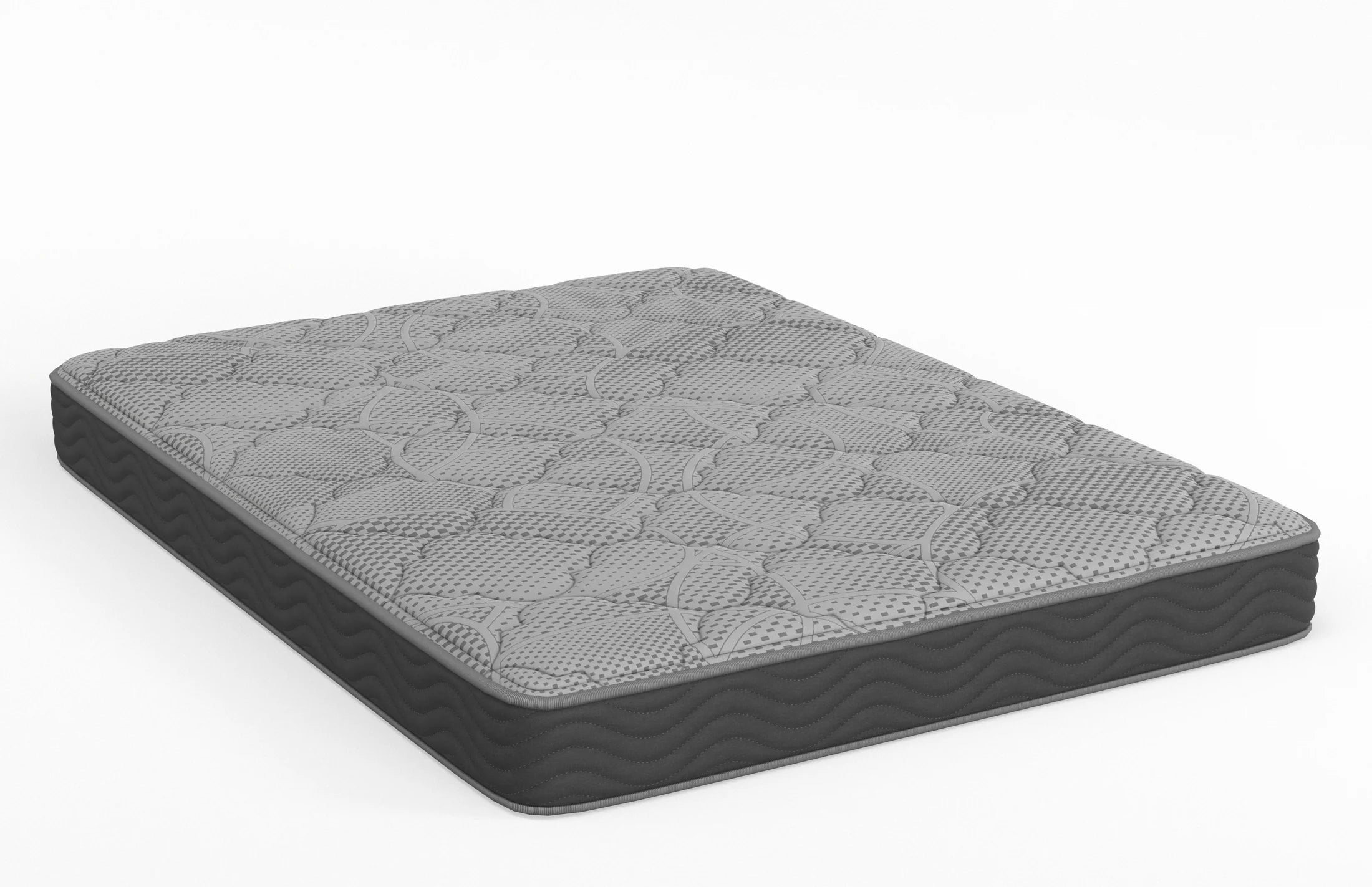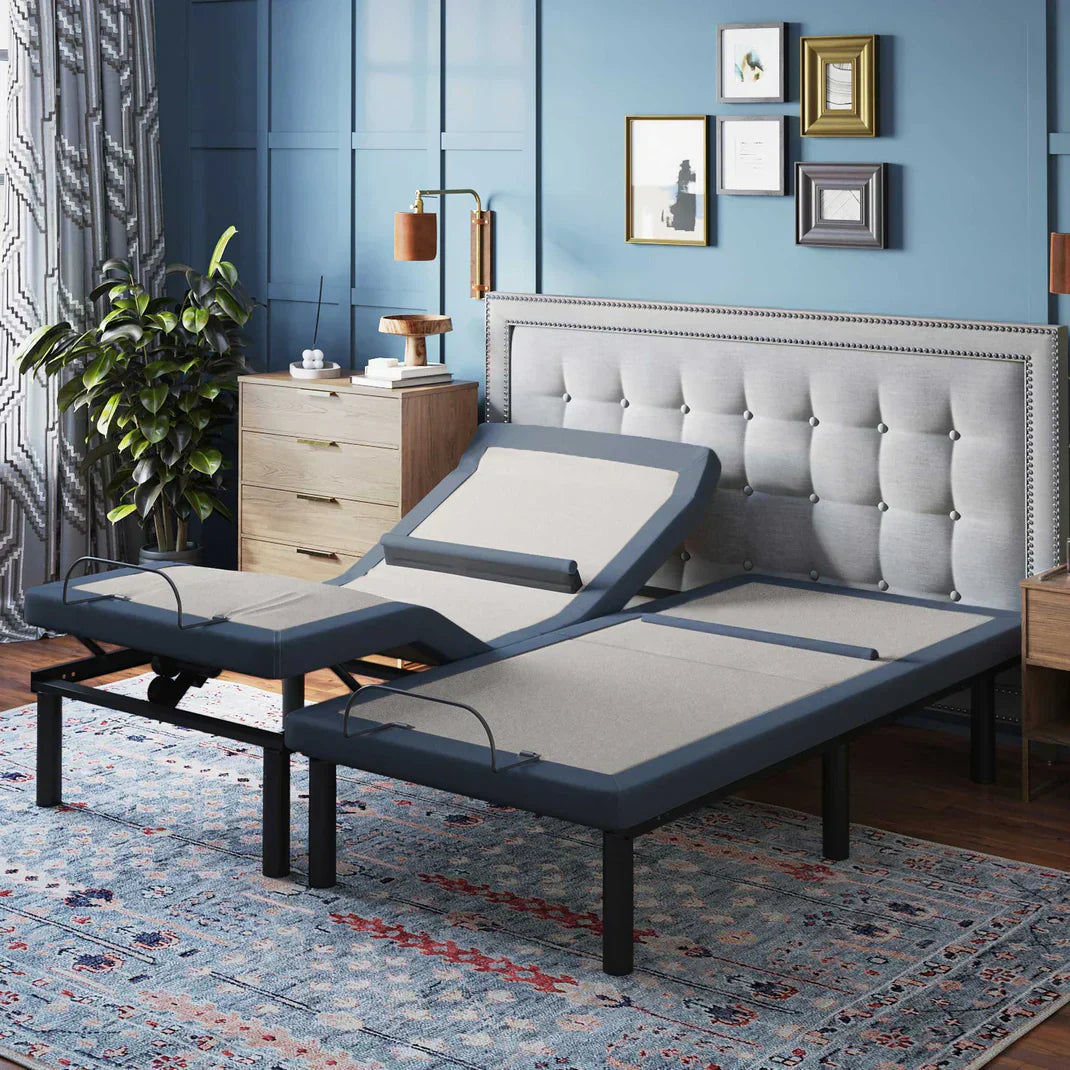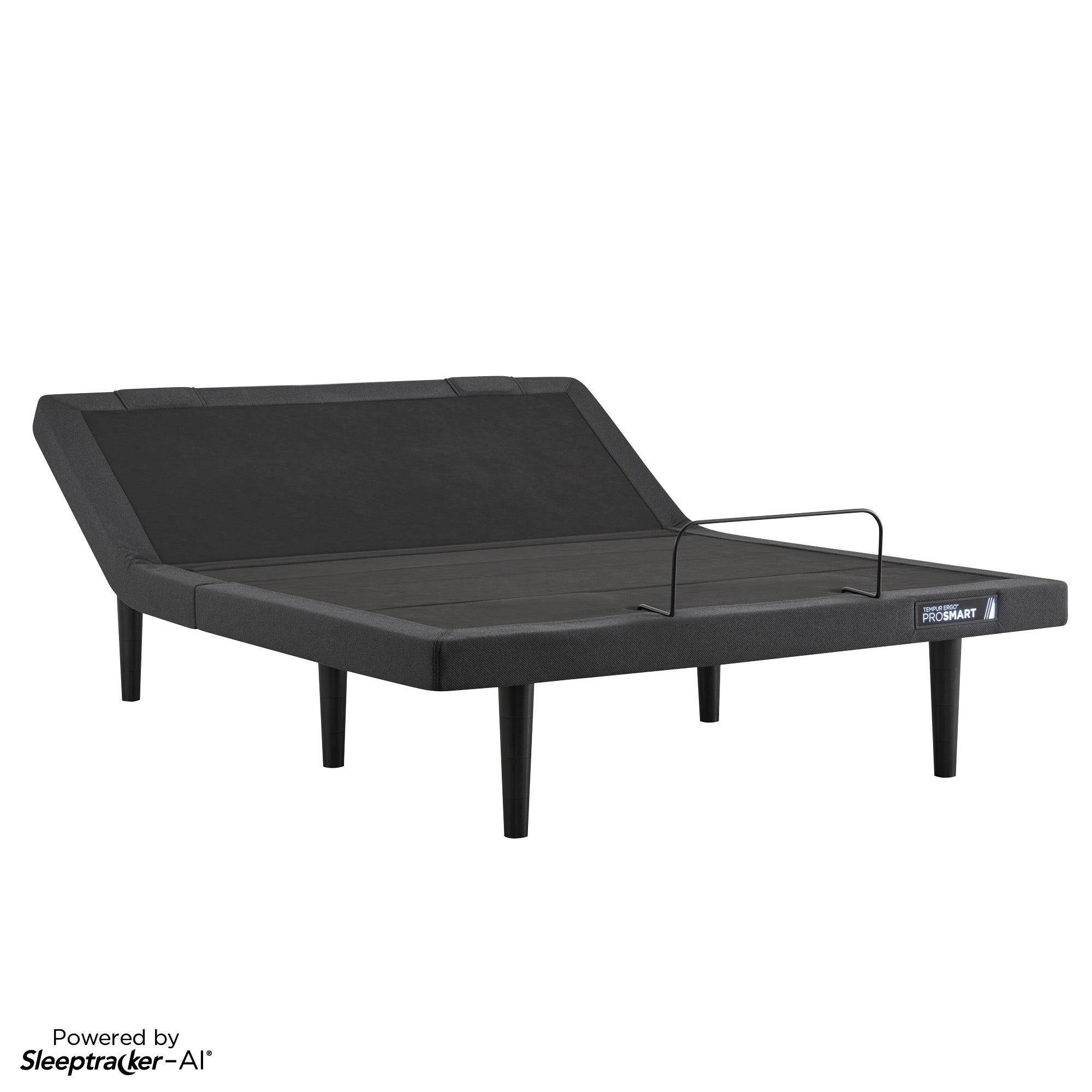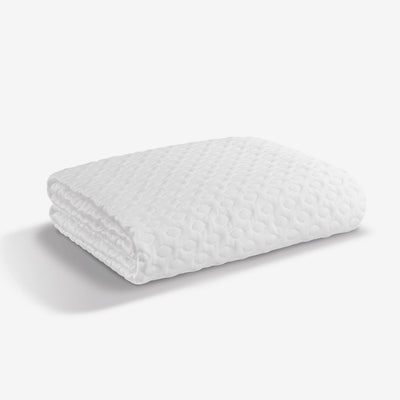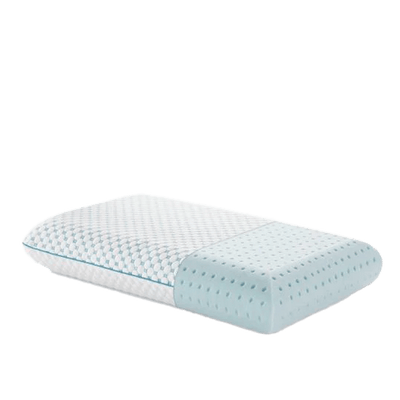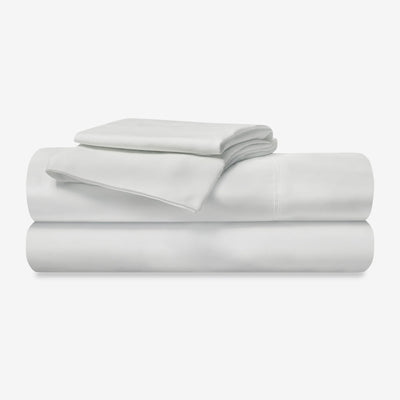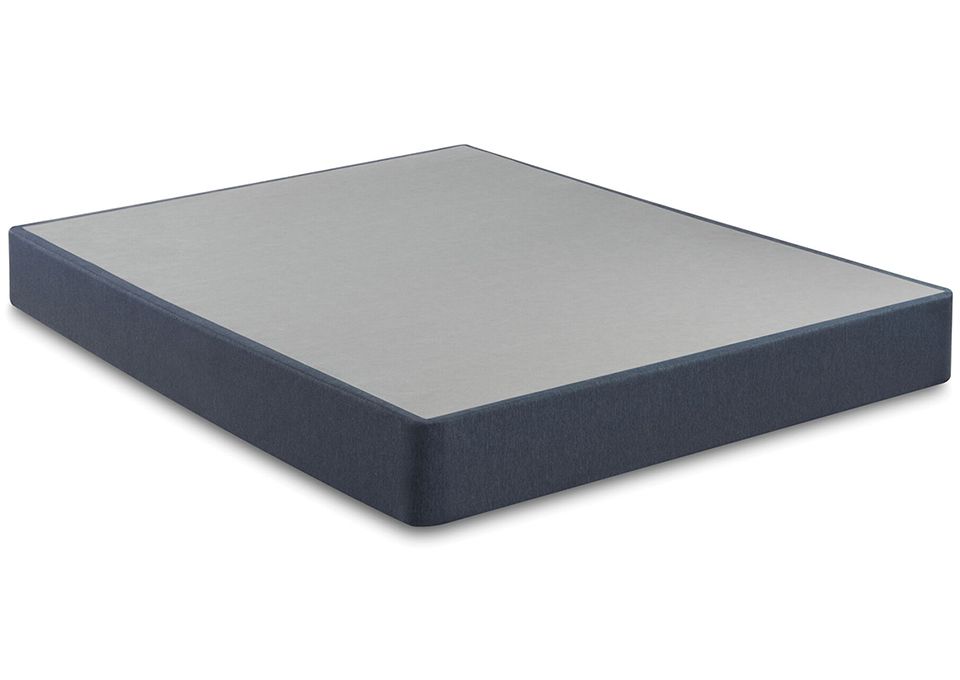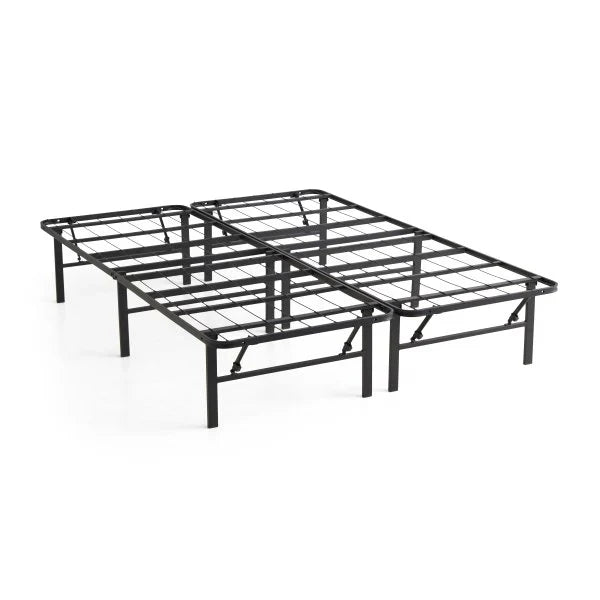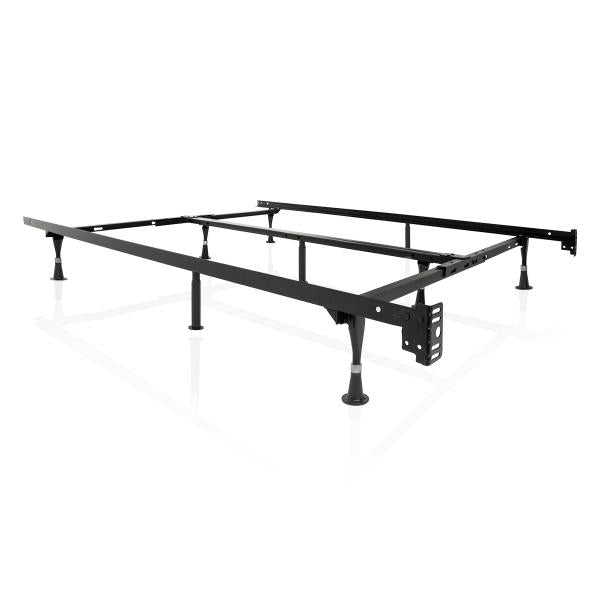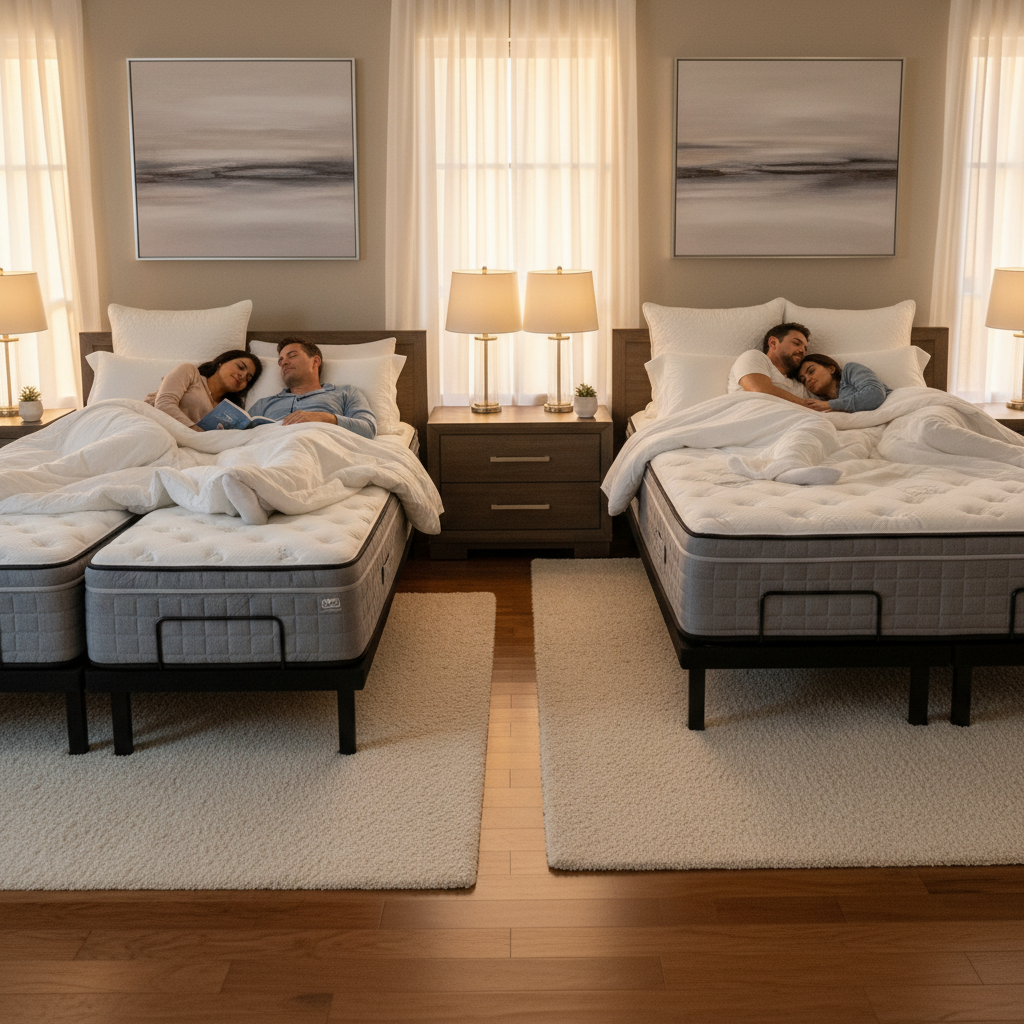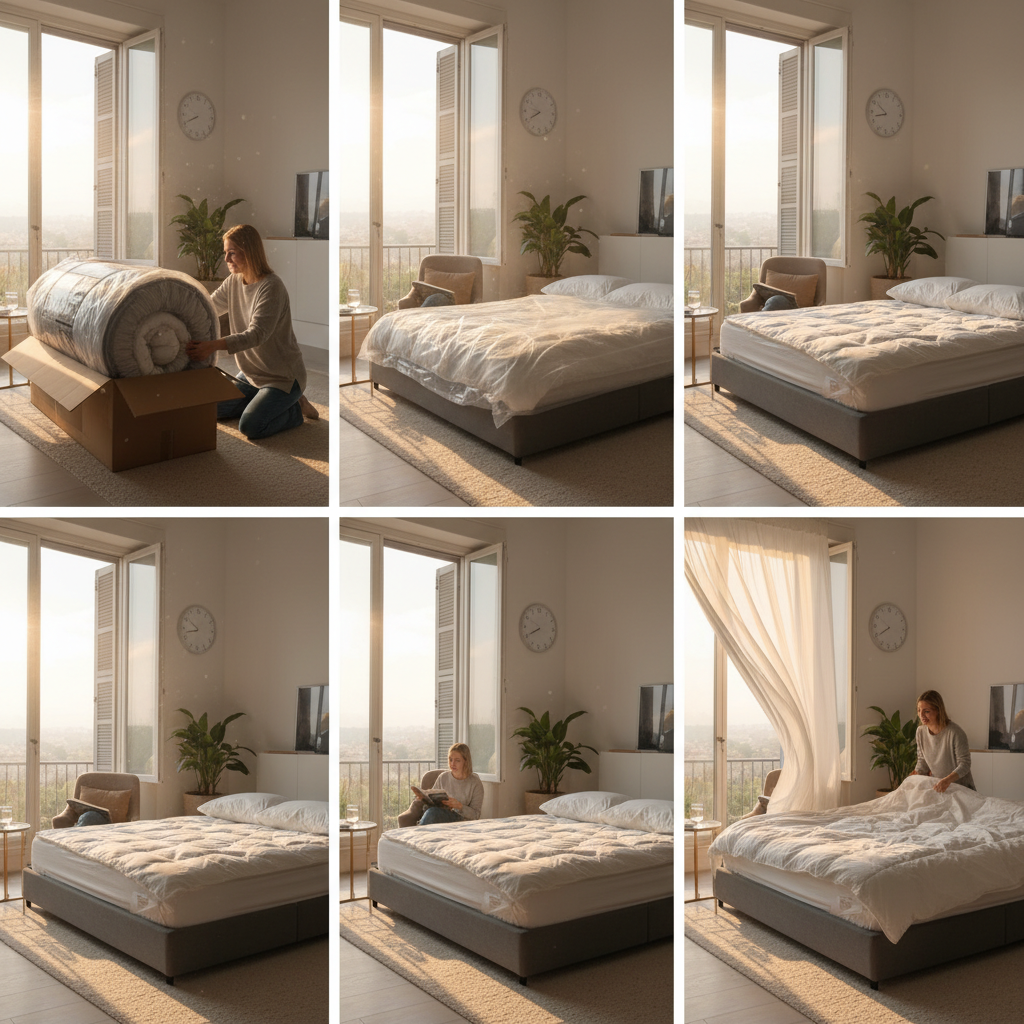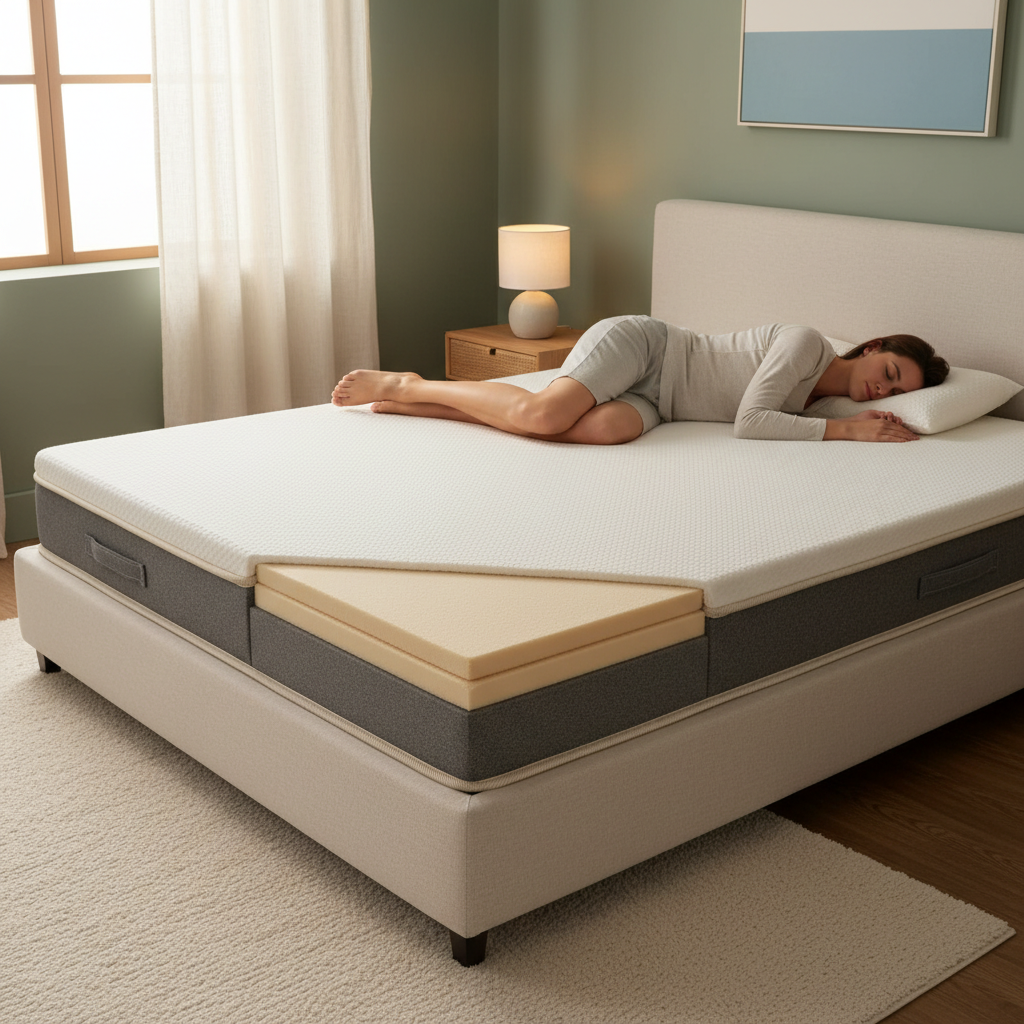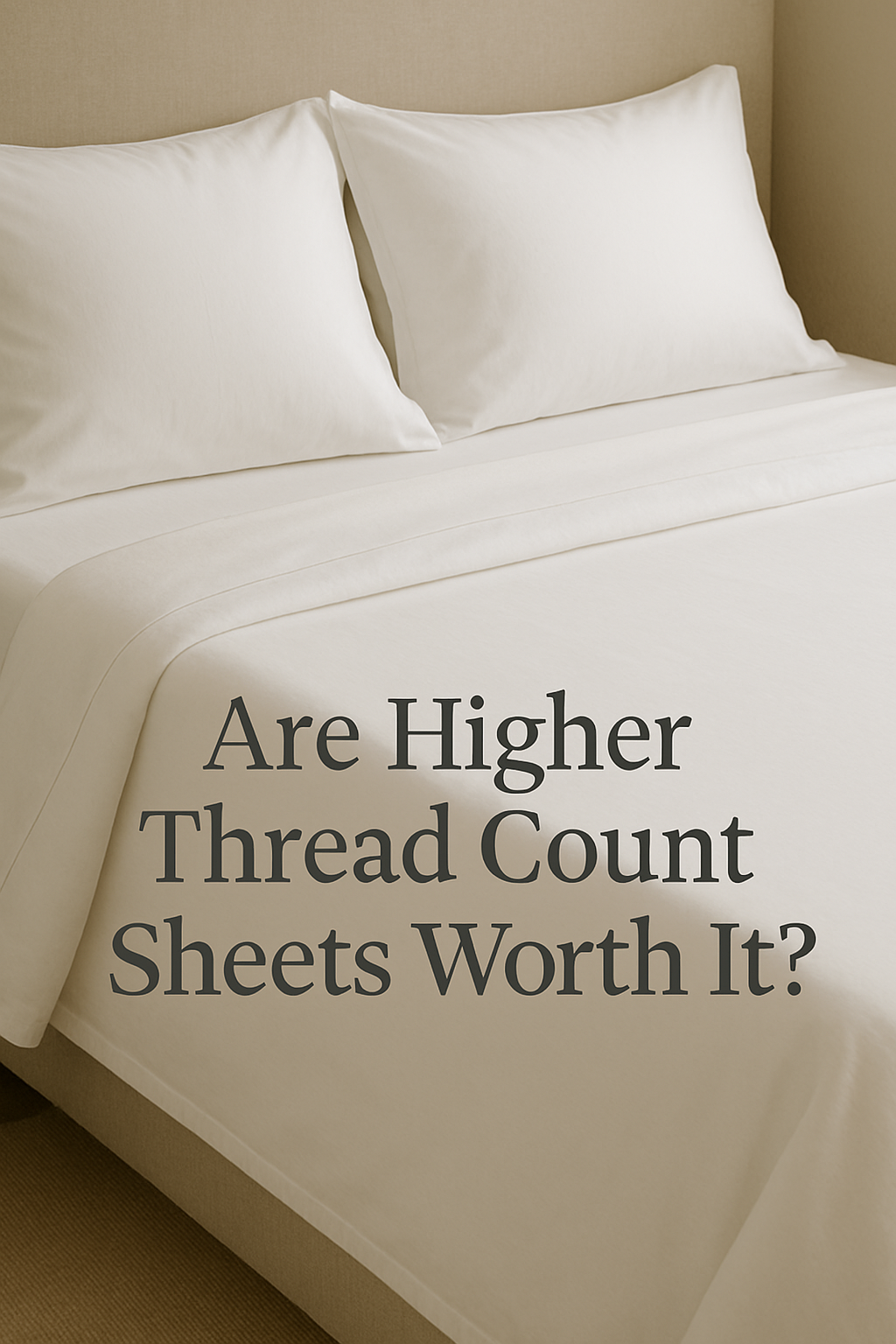
Choosing the right mattress size for your bedroom involves more than just picking what looks good online. The perfect mattress size balances your personal sleep needs, room dimensions, lifestyle factors, and future considerations. Whether you're a solo sleeper wondering between a full and queen, or trying to determine if a king will overwhelm your space, understanding what size mattress should you buy requires careful consideration of multiple factors that directly impact your daily comfort and bedroom functionality.
Your mattress size decision affects everything from how easily you can move and make your bed to how much floor space remains for other furniture. Single adults often find themselves torn between the compact convenience of a full mattress and the luxurious space of a queen, while couples must weigh comfort against room layout. The key is matching your choice to your actual needs rather than assumptions about what you "should" have.
Queen Size: The Most Versatile Choice for Solo Sleepers
A queen mattress emerges as the most recommended option for single adults seeking comfort and versatility. This size provides ample space for stretching out, accommodating pets, or hosting occasional guests without becoming significantly more difficult to manage than smaller alternatives. The 60-inch width offers enough room to move freely during sleep while maintaining reasonable manageability for daily bed maintenance.
Queen mattresses have become the standard choice because they strike an excellent balance between personal comfort and practical considerations. If you're someone who moves around during sleep, enjoys spreading out, or shares your bed with pets, the additional 15 inches of width compared to a full mattress makes a noticeable difference in sleep quality. Many solo sleepers who downsize from queen to full later regret the decision, finding the smaller size uncomfortable for long-term use.
[collection-carousel="featured-collection"]
The popularity of queen size has also made it the default option in many furniture stores and online retailers, which means you'll have more variety in bedding styles, accessories, and price points. This versatility extends to future flexibility as well - a queen can comfortably accommodate lifestyle changes without requiring an immediate mattress replacement.
For Sleep Consultants helping customers navigate size decisions, the queen consistently receives positive feedback from solo sleepers who value both immediate comfort and long-term adaptability. These Sleep Consultants are part of our in-house team who regularly assist customers in-store and remotely, drawing from direct conversations and feedback trends. You can explore comprehensive mattress options and sizing details in our mattress guide to understand how different sizes compare in real-world bedroom settings.
Full Size: Maximum Practicality for Small Spaces
A full mattress offers compelling advantages for solo sleepers who prioritize practicality, room space, and easy maintenance. Measuring 54 inches wide, a full mattress provides sufficient sleeping space for most individuals while remaining much easier to maneuver during moves, room rearrangements, or routine bed making. This size proves especially valuable in smaller bedrooms where maximizing floor space is crucial.
The practical benefits of choosing a full size extend beyond just fitting better in compact rooms. Moving a full mattress alone is significantly more manageable than wrestling with a queen, making it ideal for renters who relocate frequently or anyone who prefers handling bedroom updates independently. The lighter weight and smaller dimensions also make rotating the mattress for even wear much simpler.
-
Easier solo maneuvering for moves and cleaning
-
More bedroom floor space for other furniture
-
Sufficient width for most solo sleeping styles
-
Simpler bed making and sheet changing
-
Better fit in apartments and smaller homes
[collection-carousel="mattresses"]
Cost considerations also favor full mattresses, though the savings are modest. Both the mattress itself and bedding typically cost slightly less, and the easier handling can save money on moving services. For budget-conscious shoppers, choosing a high-quality full mattress often provides better value than stretching finances for a larger size with lower-quality materials.
Solo sleepers who rarely have overnight guests and prefer an uncluttered bedroom layout often find full mattresses perfectly adequate. Many users report being surprised by how much sleeping space a full actually provides, especially if they've become accustomed to sharing larger beds. This anecdotal feedback comes from customer conversations gathered during mattress consultations and follow-up surveys. Our size guide can help you visualize exactly how different mattress dimensions will fit in your specific bedroom layout.
Room Size and Layout Considerations
Your bedroom dimensions should be the primary factor in determining mattress size, superseding abstract preferences or social expectations. A mattress that overwhelms your room creates daily inconvenience and can make the space feel cramped and uninviting. The general rule of maintaining at least 2-3 feet of clearance around your bed ensures comfortable movement and access to dressers, closets, and windows.
Measuring Your Space
Before selecting a mattress size, measure your bedroom carefully and consider the placement of existing furniture. A queen mattress requires roughly 5 feet by 6.5 feet of floor space just for the bed itself, while a full needs about 4.5 feet by 6.5 feet. Factor in space for nightstands, walking paths, and door clearances to avoid creating a cramped environment.
Room shape matters as much as total square footage. A narrow rectangular bedroom might accommodate a queen lengthwise but feel tight with insufficient walking space along the sides. Conversely, a smaller but more square room might comfortably fit a full while leaving ample space for other furniture and easy movement.
[collection-carousel="hybrid-mattresses"]
Consider your daily routines when evaluating space requirements. If you need access to both sides of the bed for making it or if your partner will occasionally stay over, ensure adequate clearance. However, if your bed sits against a wall and you primarily access it from one side, you can work with tighter dimensions.
Sleep Style and Personal Factors
Your individual sleep habits and physical characteristics play crucial roles in mattress size selection. Active sleepers who change positions frequently throughout the night benefit from the additional width of a queen mattress, while those who sleep relatively still may find a full entirely adequate. Your height, preferred sleep position, and whether you share your bed with pets all influence the optimal size choice.
Height and Body Size
Taller individuals, particularly those over 6 feet, should carefully consider length requirements. While both full and queen mattresses typically measure 75 inches long, some sleepers prefer additional length for comfort. If you're tall and sleep stretched out, a queen provides more diagonal space for comfortable positioning.
Pet Accommodations
Pet ownership significantly impacts mattress size decisions for solo sleepers. Dogs and cats that share your bed can substantially reduce your effective sleeping space on a full mattress. If you currently have pets or plan to adopt them, choosing a queen size prevents sleep disruptions and maintains comfort for both you and your furry companions.
Large breed dogs especially benefit from the extra space of a queen mattress, while smaller pets might be perfectly accommodated on a full. Consider your pet's size, sleeping habits, and how much they move during the night when making this decision.
Future Planning and Lifestyle Changes
While it's important to buy for your current needs rather than hypothetical situations, reasonable future planning can inform your mattress size decision. Consider upcoming lifestyle changes, living situation stability, and realistic relationship prospects when weighing your options. However, avoid letting others' expectations override your current comfort and space requirements.
If you're planning to move within the next few years, factor in the likelihood of different bedroom sizes and configurations. A full mattress offers more flexibility for various room layouts, while a queen might limit your future housing options if you need to downsize or move to areas with smaller bedrooms.
Relationship considerations deserve thought but shouldn't dominate your decision. If you're single and comfortable with that status, choose based on your solo needs. However, if you're actively dating and anticipate sharing your bed regularly within the mattress's lifespan, a queen might prove more practical for overnight guests and potential cohabitation.
Budget and Value Considerations
The cost difference between full and queen mattresses varies by brand and quality level, but typically ranges from $50 to $200 for the mattress itself. Bedding costs show minimal variation, with most retailers pricing queen sheets and comforters only slightly higher than full sizes. These modest price differences shouldn't be the primary deciding factor, but they're worth considering if you're working within a tight budget.
Quality matters more than size when it comes to long-term value. A high-quality full mattress that provides excellent support and comfort offers better value than a larger mattress with inferior materials or construction. Focus on finding the right balance of size, quality, and price rather than automatically assuming bigger equals better.
-
Determine your space requirements first
-
Set a realistic budget including bedding and accessories
-
Prioritize quality materials within your chosen size category
-
Consider financing options for higher-quality choices
-
Factor in delivery and setup costs
For customers interested in premium mattresses but concerned about budget constraints, exploring mattress financing options can make higher-quality choices more accessible without compromising on the size that best fits your needs.
Making the Final Decision
The choice between mattress sizes ultimately comes down to prioritizing your most important factors: space, comfort, practicality, or future flexibility. Solo sleepers who value easy maintenance and maximum room space will likely prefer a full mattress, while those prioritizing sleeping comfort and versatility will gravitate toward a queen.
Test sleeping on both sizes if possible, though many mattress stores primarily display queen and king sizes. Pay attention to how much space you actually use when sleeping and whether additional width would improve your rest quality. Consider your bedroom layout with furniture in place and visualize daily activities like bed making and cleaning around the mattress.
Professional guidance can provide valuable perspective on your specific situation. Our certified Sleep Consultants understand how room dimensions, sleep styles, and personal preferences interact to determine the optimal mattress size. You can book an appointment to discuss your specific bedroom layout and sleep needs with an expert who can provide personalized recommendations.
Remember that both full and queen mattresses can provide excellent sleep quality when matched appropriately to your needs. The "right" choice depends on your specific circumstances rather than universal preferences. Consider your current living situation, sleep habits, and realistic future needs to make a decision you'll be comfortable with for years to come.
Selecting the proper mattress size for your bedroom requires balancing multiple factors including room dimensions, sleep style, lifestyle needs, and personal preferences. Queen mattresses offer superior comfort and versatility for solo sleepers with adequate space, while full mattresses provide practical benefits for smaller rooms and those prioritizing easy maintenance. Your individual circumstances should guide this important decision rather than social expectations or assumptions about what size you "should" have. Take time to measure your space, consider your sleep habits, and choose the size that best supports both your immediate comfort and long-term satisfaction with your bedroom setup.







